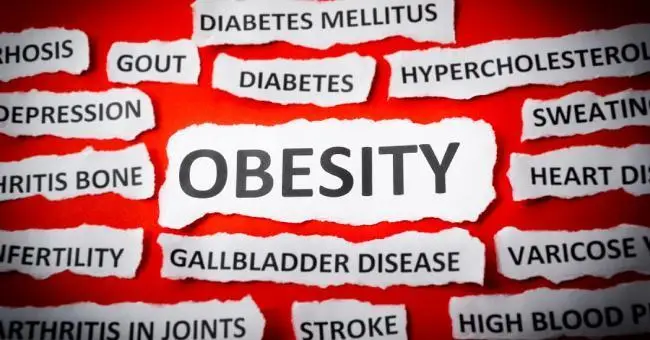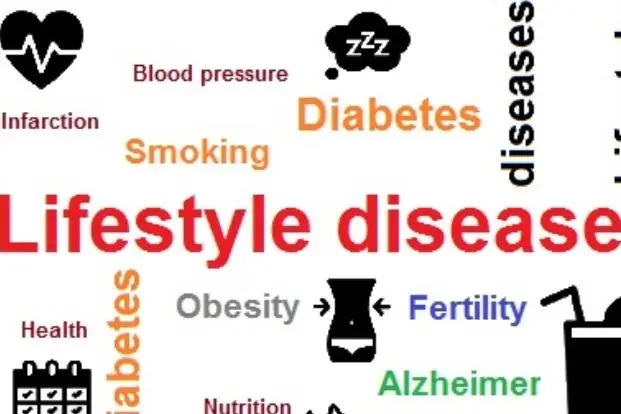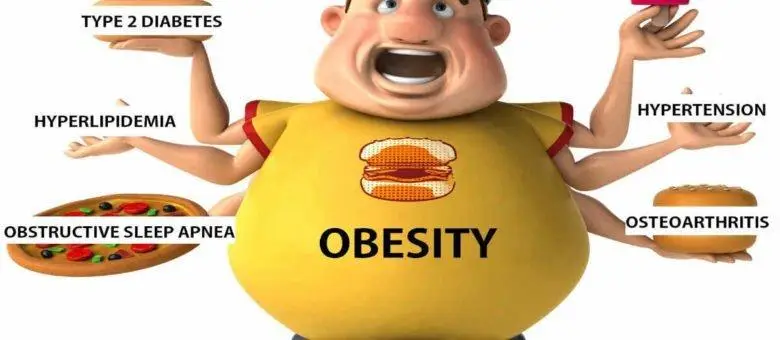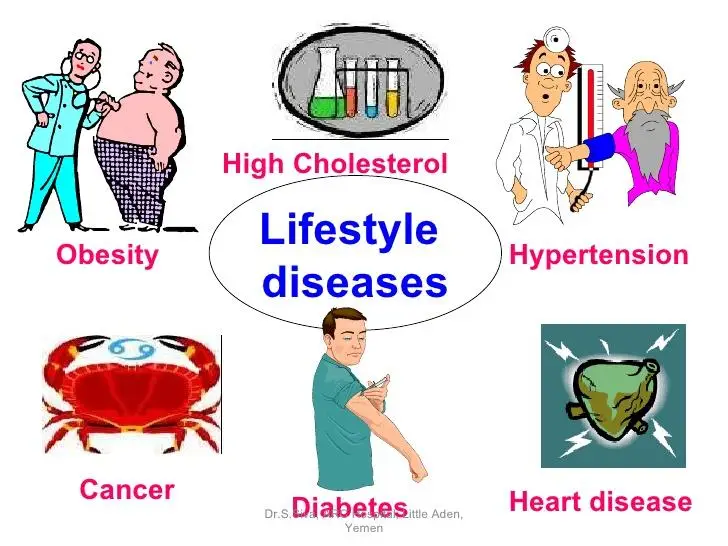In a fast-paced world where convenience often trumps healthy choices, the prevalence of lifestyle diseases has become a pressing concern for many. From heart disease to diabetes, these conditions are largely influenced by the way we live our lives. But what exactly are lifestyle diseases, and how do they impact our well-being? Let’s delve into the world of lifestyle diseases and explore the ways in which we can mitigate their effects through mindful choices and proactive measures.
Understanding Lifestyle Diseases

Lifestyle diseases, also known as non-communicable diseases, are health conditions that are primarily caused by the way people live their lives. These diseases are largely preventable and are often linked to unhealthy behaviors and habits. is crucial in order to take proactive steps towards prevention and management.
The main risk factors for lifestyle diseases include poor diet, lack of physical activity, tobacco use, excessive alcohol consumption, and stress. These behaviors can lead to the development of conditions such as obesity, heart disease, type 2 diabetes, stroke, and certain types of cancer. By making positive changes in lifestyle choices, individuals can reduce their risk of developing these diseases.
It is essential for individuals to be aware of the impact that their lifestyle choices have on their health. By adopting healthy habits such as eating a balanced diet, exercising regularly, avoiding tobacco and excessive alcohol consumption, and managing stress effectively, one can significantly lower their risk of developing lifestyle diseases. Making small changes in daily routines can have a big impact on overall health and well-being.
Preventive measures such as regular health screenings, vaccinations, and check-ups with healthcare providers are also important in managing lifestyle diseases. Early detection and intervention can help prevent the progression of these conditions and improve outcomes. By taking a proactive approach to health and wellness, individuals can empower themselves to live healthier, happier lives free from the burden of lifestyle diseases.
Impact of Lifestyle Choices on Health

Lifestyle diseases, also known as non-communicable diseases, are health conditions that are primarily caused by the choices we make in our everyday lives. These diseases are often linked to unhealthy habits such as poor diet, lack of exercise, smoking, excessive alcohol consumption, and stress. While some lifestyle diseases are genetic or develop due to other factors, many can be prevented or managed through simple lifestyle changes.
Some common lifestyle diseases include:
- Heart disease
- Obesity
- Type 2 diabetes
- High blood pressure
- Certain types of cancers
These diseases are on the rise globally, with the World Health Organization estimating that they are responsible for almost 70% of all deaths worldwide. However, the good news is that many lifestyle diseases can be prevented by adopting a healthier lifestyle. This includes eating a balanced diet, staying physically active, avoiding tobacco and excessive alcohol consumption, and managing stress effectively.
By making small changes to our daily habits, we can significantly reduce our risk of developing lifestyle diseases and improve our overall health and well-being. It’s never too late to start making healthier choices and taking control of our health. Remember, prevention is always better than cure!
Identification of Common Lifestyle Diseases

Lifestyle diseases are conditions that are primarily caused by unhealthy lifestyle choices such as poor diet, lack of physical activity, excessive alcohol consumption, and smoking. These diseases are becoming increasingly common in today’s society due to the prevalence of sedentary lifestyles and easy access to unhealthy food options.
Common lifestyle diseases include:
- Obesity: the excessive accumulation of body fat, often caused by overeating and lack of exercise.
- Diabetes: a condition where the body is unable to properly regulate blood sugar levels, often linked to obesity and poor diet.
- Heart disease: a range of conditions that affect the heart and blood vessels, usually caused by factors such as high blood pressure, high cholesterol, and smoking.
- Hypertension: high blood pressure, which can be a result of poor dietary choices, lack of exercise, and stress.
It is important to identify lifestyle diseases early on in order to prevent further complications and improve overall health and well-being. By making positive changes to your lifestyle, such as eating a balanced diet, staying physically active, and avoiding harmful behaviors, you can reduce your risk of developing these conditions.
| Disease | Cause | Prevention |
|---|---|---|
| Obesity | Overeating, lack of exercise | Healthy diet, regular physical activity |
| Diabetes | Poor diet, obesity | Healthy eating, weight management |
| Heart disease | High blood pressure, high cholesterol | Regular exercise, no smoking |
Prevention and Management Strategies for Lifestyle Diseases

Life style diseases, also known as chronic diseases, are conditions that are primarily caused by unhealthy lifestyle choices such as poor diet, lack of physical activity, smoking, and excessive alcohol consumption. These diseases include obesity, heart disease, Type 2 diabetes, and hypertension. They are becoming increasingly common in today’s society due to the sedentary nature of many people’s lives and the prevalence of processed and unhealthy food options.
To prevent and manage lifestyle diseases, individuals must make conscious efforts to adopt healthier habits. This can involve making changes to diet, increasing physical activity, quitting smoking, and moderating alcohol intake. By making these lifestyle changes, individuals can significantly reduce their risk of developing chronic diseases and improve their overall quality of life.
:
- Regular physical activity, such as walking, jogging, or swimming
- Healthy eating habits, including a diet rich in fruits, vegetables, and whole grains
- Quitting smoking and avoiding secondhand smoke exposure
- Moderating alcohol consumption to recommended levels
- Regular health check-ups to monitor blood pressure, cholesterol levels, and blood sugar levels
| Prevention Strategy | Effectiveness |
|---|---|
| Regular physical activity | Highly effective in reducing risk of heart disease and obesity |
| Healthy eating habits | Significantly lowers risk of Type 2 diabetes and hypertension |
| Quitting smoking | Dramatically reduces risk of lung cancer and cardiovascular disease |
| Moderating alcohol consumption | Helps prevent liver disease and alcohol-related cancers |
| Regular health check-ups | Early detection of chronic diseases for timely intervention |
Role of Diet and Exercise in Preventing Lifestyle Diseases

Lifestyle diseases are health conditions that are primarily caused by the way we live our lives, including our dietary choices and levels of physical activity. These diseases are often preventable through proper diet and exercise. By making small changes to our daily habits, we can significantly reduce our risk of developing these conditions.
One of the key factors in preventing lifestyle diseases is maintaining a healthy diet. By eating a balanced diet rich in fruits, vegetables, whole grains, and lean proteins, we can provide our bodies with the nutrients they need to function properly. Avoiding processed foods high in sugar, salt, and unhealthy fats can help prevent conditions such as obesity, heart disease, and diabetes.
Regular exercise is also crucial in preventing lifestyle diseases. Physical activity not only helps us maintain a healthy weight, but it also strengthens our muscles, improves our cardiovascular health, and boosts our mental wellbeing. Incorporating activities such as walking, jogging, cycling, or swimming into our daily routine can have a significant impact on our overall health.
By making smart choices when it comes to our diet and exercise habits, we can reduce our risk of developing lifestyle diseases and live longer, healthier lives. Remember, it’s never too late to start making positive changes – even small steps towards a healthier lifestyle can make a big difference in the long run.
Signs and Symptoms of Lifestyle Diseases

Life style diseases, also known as non-communicable diseases, are conditions that are primarily caused by unhealthy lifestyle choices such as poor diet, lack of physical activity, smoking, and excessive alcohol consumption. These diseases are chronic in nature and can have serious long-term effects on a person’s health and well-being.
Signs and Symptoms
-
Obesity: One of the most common lifestyle diseases, obesity can lead to a host of health issues including heart disease, diabetes, and high blood pressure. Signs of obesity include a body mass index (BMI) of 30 or higher, excessive weight gain, and difficulty breathing.
-
Type 2 Diabetes: This type of diabetes is often associated with poor diet and lack of exercise. Symptoms of type 2 diabetes include increased thirst, frequent urination, fatigue, and blurred vision.
-
High Blood Pressure: Also known as hypertension, high blood pressure can be caused by a variety of factors including obesity, stress, and lack of exercise. Symptoms of high blood pressure may include headaches, dizziness, and chest pain.
-
Heart Disease: Lifestyle factors such as smoking, poor diet, and lack of exercise can contribute to the development of heart disease. Symptoms of heart disease can vary but may include chest pain, shortness of breath, and fatigue.
By recognizing the , individuals can take steps to improve their health and reduce their risk of developing these conditions. Making positive lifestyle changes such as eating a healthy diet, exercising regularly, and avoiding tobacco and excessive alcohol consumption can help prevent and manage lifestyle diseases.
Risk Factors Associated with Lifestyle Diseases

Lifestyle diseases, also known as non-communicable diseases, are health conditions that are primarily caused by the way we live our lives. These diseases are often linked to unhealthy behaviors and habits that can be modified or prevented. Understanding the is crucial in order to take proactive steps towards better health and well-being.
Some common include:
- Poor diet: Consuming high amounts of processed foods, sugary beverages, and unhealthy fats can increase the risk of developing diseases such as obesity, diabetes, and heart disease.
- Lack of physical activity: Leading a sedentary lifestyle and not getting enough exercise can contribute to the development of conditions like hypertension, stroke, and osteoporosis.
- Smoking and alcohol consumption: Tobacco use and excessive alcohol intake are major risk factors for diseases such as cancer, liver disease, and respiratory disorders.
- Stress and mental health: Chronic stress, anxiety, and depression can have a negative impact on overall health and increase the risk of conditions like hypertension, heart disease, and digestive disorders.
| Risk Factor | Lifestyle Disease |
| Poor diet | Obesity, diabetes, heart disease |
| Lack of physical activity | Hypertension, stroke, osteoporosis |
| Smoking and alcohol consumption | Cancer, liver disease, respiratory disorders |
| Stress and mental health | Hypertension, heart disease, digestive disorders |
By making positive changes to our lifestyle, such as adopting a balanced diet, engaging in regular physical activity, quitting smoking, and managing stress effectively, we can reduce the risk of developing lifestyle diseases and improve our overall quality of life. It’s never too late to start making healthier choices for a better and brighter future.
Seeking Medical Help for Lifestyle Diseases

Life style diseases, also known as non-communicable diseases, are health conditions that are primarily caused by an individual’s daily habits and routines. These diseases are often a result of unhealthy lifestyle choices such as poor diet, lack of physical activity, smoking, excessive alcohol consumption, and chronic stress.
Common examples of lifestyle diseases include obesity, type 2 diabetes, cardiovascular diseases, hypertension, and certain types of cancer. These conditions can have serious implications on one’s overall health and well-being if left untreated.
If you suspect that you may be at risk for or already have a lifestyle disease, it is crucial to seek medical help as soon as possible. Consulting with a healthcare professional can help in diagnosing the condition, creating a treatment plan, and providing guidance on making necessary lifestyle changes to improve your health.
Remember, taking proactive steps towards managing and preventing lifestyle diseases can significantly impact your quality of life and longevity. Don’t hesitate to reach out to a healthcare provider if you have concerns about your health or are experiencing symptoms related to lifestyle diseases.
Q&A
Q: What are lifestyle diseases?
A: Lifestyle diseases, sometimes referred to as non-communicable diseases (NCDs), are illnesses that are primarily caused by unhealthy lifestyle choices such as poor diet, lack of physical activity, smoking, and excessive alcohol consumption.
Q: What are some common examples of lifestyle diseases?
A: Some common examples of lifestyle diseases include heart disease, type 2 diabetes, obesity, stroke, and certain types of cancer. These diseases are often preventable and can be managed through lifestyle changes.
Q: How do lifestyle choices contribute to the development of these diseases?
A: Unhealthy lifestyle choices can lead to the development of lifestyle diseases by causing damage to the body over time. Poor diet, lack of exercise, and other bad habits can lead to conditions such as high blood pressure, high cholesterol, and insulin resistance, all of which increase the risk of developing chronic diseases.
Q: Can lifestyle diseases be reversed or prevented?
A: Yes, lifestyle diseases can often be reversed or prevented through lifestyle changes. Adopting a healthy diet, engaging in regular physical activity, avoiding smoking, and moderating alcohol consumption can all help reduce the risk of developing these diseases and improve overall health.
Q: How can individuals protect themselves from lifestyle diseases?
A: Individuals can protect themselves from lifestyle diseases by making healthy choices in their daily lives. This includes eating a balanced diet, staying active, avoiding tobacco and excessive alcohol, and getting regular check-ups with a healthcare provider to monitor their health. Making small changes can have a big impact on reducing the risk of developing lifestyle diseases.
Closing Remarks
In conclusion, understanding lifestyle diseases is essential in taking control of our health and well-being. By making conscious choices and adopting healthy habits, we can prevent and even reverse the impact of these diseases on our lives. Remember, our lifestyle is the key to a long and fulfilling life. So, let’s make the necessary changes today and embrace a healthier way of living. Your future self will thank you for it.




Pingback: what are social determinants of health - Dr Strong